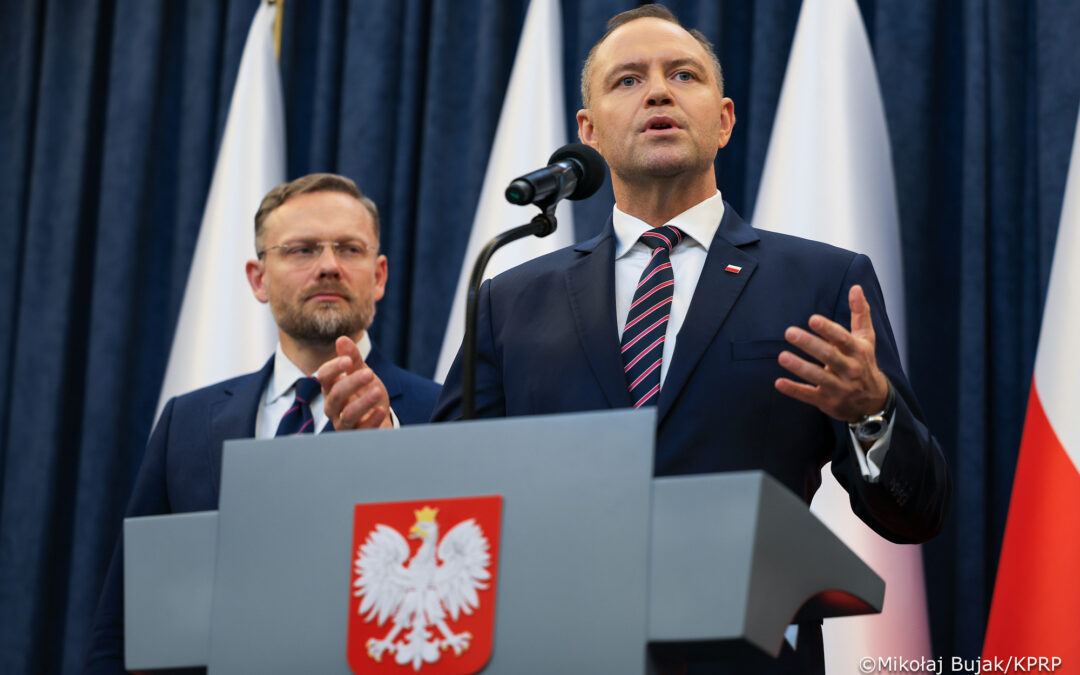By Anna Rzhevkina
Since Russia’s invasion of Ukraine, almost 3 million people have fled across the border in Poland, and it is estimated that the majority remain in the country.
As many of them seek a place to stay temporarily or long term, the demand for apartments for rent has spiked in the large Polish cities that have been the refugees’ main destination. This has further pushed up already record-high rental prices, fuelled by inflation and high energy bills.
The UN's refugee agency will open an office in Kraków to help the city support refugees from Ukraine, including by providing financial aid.
Kraków is hosting around 150,000 refugees, causing its population to grow almost 20% in the space of a month https://t.co/sjb3ZY6Tb0
— Notes from Poland 🇵🇱 (@notesfrompoland) March 31, 2022
Over the first month of the war, the number of flats being offered as available for rent in Warsaw, Gdańsk, and Poznań dropped by 34-40%, according to data from Gethome, a real estate service. In Kraków, Wrocław and Łódź, it plummeted by more than 60%.
Federica Crepaz, who moved to Gdańsk from Italy for work in February, spent the first weeks in an Airbnb apartment, searching for a room for the long term. After arranging to visit one, “some landlords told me after a few hours that it was already rented”, she says. “I had the feeling that if I found a room I’d have to take it immediately.”
Her colleagues had similar struggles, and Federica said finding a separate apartment was even more difficult compared to a room in a shared flat.
About two weeks after the start of the war, the number of views of ads on Otodom – another popular real estate service in Poland – had surged by 166%.
“With the outbreak of the war, we could see an increase in the number of responses to rental ads. They were three to four times higher than at the end of February, which reflects the strong need for the refugees coming to Poland to find a roof over their head,” Karolina Klimaszewska from Otodom told Notes from Poland.
The surge in demand had an impact on rental prices, with Otodom seeing the monthly average for apartments listed on its service rise 5% from 2,721 zloty in February to 2,863 zloty in March. In Warsaw and Wroclaw, the averages rose 7% and 8.6% respectively.
Source: Otodom
A spike in demand makes flat-hunting especially hard for people with a tight budget, such as students. There is a risk of returning to the situation of 15 years ago, when owners held “castings” for tenants and universities in Kraków issued an appeal for landlords to rent to students “at fair prices”, says Marek Wielgo, an analyst at Gethome.
The situation has also had a negative impact on not only the quantity but also the quality of flats offered for rent. The practice of splitting an apartment into small sections to rent separately has already become common and may become even more widespread in the future, says Wielgo.
Students, who normally leave flats for the summer to go for holidays, may now decide to keep their accommodation as it might be hard to find new digs when they return in September, adds Klimaszewska. This may lead to a smaller supply in the market and even higher prices. One thing is certain: there will be no shortage of potential tenants.
Wait-and-see mode
Even though finding housing for rent is becoming more difficult, people are also less likely to buy flats now compared to previous years due to less affordable mortgages combined with growing prices and uncertainty related to the war.
Real estate prices in Warsaw grew about 10% in a year, reaching an average of 13,254 zloty (€2,860) per square metre in February, according to real estate company Morizon. Gdańsk, Kraków, Łódź, Wrocław, and Poznań also showed double-digit growth. The highest increase (20.5%) was recorded in Gdańsk, with average prices hitting 12,166 zloty (€2,620) per square metre.
Demand has, however, recently started to slow after the central bank last year began raising interest rates for the first time in a decade in response to the rampant inflation and a weakening currency.
In April, the regulator increased the reference interest rate by 100 basis points, bringing it to 4.5%. Previously, between May 2020 and September 2021, it had been close to zero, and it was 1.5% over the preceding five years.
With higher rates, people who might have considered taking mortgages are now holding back. In February, the number of people applying for a mortgage declined by more than one third (36.3%) compared to a year ago, according to the Credit Information Bureau (BIK).
Poland's central bank raised its benchmark interest rate by 100bps today – twice as much as had been forecast – to 4.5%, the highest level in a decade.
Via: https://t.co/VELkvcl2kQ pic.twitter.com/joKVa3JMYX
— Notes from Poland 🇵🇱 (@notesfrompoland) April 6, 2022
In addition, Poland tightened the requirements for receiving financing, with banks having to ensure that loan takers can afford repayments if rates further increase.
“In a situation of steadily rising interest rates and rising housing prices, a decline in demand was inevitable in both the primary and secondary market,” Agnieszka Mikulska, a market expert at CBRE, a real estate firm, told Notes from Poland.
In the first quarter of 2022, real estate sales were significantly lower compared to the first quarter of 2021, with analysts at Pekao, a bank, recording a 22% year-on-year decline. In the future, it is likely that demand will further decline, and it will take longer to sell an apartment, says Mikulska.
Prices up, despite lower demand
On the supply side, developers also face constantly rising prices of building materials. In March, they were on average 30% higher compared to a year ago, according to PSB, Poland’s largest network of building material wholesalers. As construction costs have become increasingly hard to estimate, existing investments are being delayed and new ones are postponed.
Meanwhile, since the outbreak of war in Ukraine, there have been reports of staff shortages in the Polish construction, industrial processing and transport sectors, where previously many Ukrainian men were employed, some of whom have returned to defend their homeland.
Rising land, material and construction prices have led to growth in housing prices even as demand slowed down. “We observe such a dynamic increase in construction costs that significant reductions in average prices seem impossible in the near future,” says Mikulska. “Rather their further increases should be expected.”
In Łódź, the third-largest city in Poland, last March 68% of flats in the city cost below 7,000 zloty (€1,510) per square metre, but now that share has fallen to less than 11%, according to Gethome. In other major cities, such as Warsaw, Kraków, Gdańsk, Poznań, and Wrocław, such prices are also extremely rare.
However, prices are likely to grow more slowly in 2022 compared to the previous years. “In the coming months, annual increases may not be as spectacular as in 2021 and may not exceed galloping inflation,” writes Ewelina Staruch, a real estate analyst at Centrum AMRON, in a report cited by business news service Forsal.
Demand may be propped up somewhat by the government’s flagship “Polish Deal” programme, part of which aims to help people secure mortgages with state guarantees. However, the share of flats that meet the price criteria for the scheme is tiny.
With prices hitting record highs and the growing popularity of remote work, more people are considering buying apartments in smaller towns, where the infrastructure is often better than on the outskirts of big cities, says Wielgo of Gethome.
Still, Mikulska from CBRE expects demand to gradually return in big cities. Part of the demand from individual customers will be replaced by purchases made by institutional investors and some people will decide to buy, regardless of high prices, to protect cash from inflation and to earn from the booming rental market.
Main image credit: Przemyslaw Skrzydlo / Agencja Gazeta





















